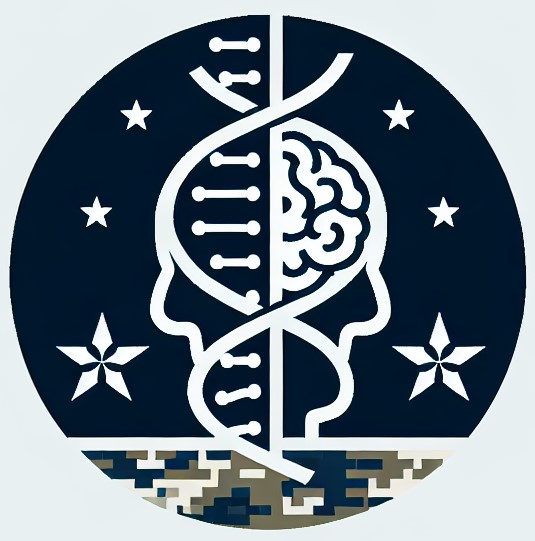Analytics Shed Guest Site
Current Members of the Shed and their contributions.


Ed’s Projects
AIDE (Augmented Intelligence and Decision Enhancement).
The projects that I am working on involve developing a suite of apps that augment human thinking. They are grouped under a master app called AIDE (Augmented Intelligence and Decision Enhancement).
This suite, as the name indicates, are designed to augment our ability to make deliberative or longer-term decisions. These apps are not intended to replace humans with some form of “artificial intelligence”. They are intended to provide deductive, inductive, and abductive reasoning, with creativity and wisdom, to Augmented General Intelligence (AuGI).

Ed’s Projects
Augmented Reasoning
I have just completed my app for augmenting human logical thinking and argumentation. This app provides the valid conclusions for syllogisms and sorites. That is, it does not check the validity of the conclusions, as do the usual propositional logic methods: it generates the conclusions.
This ‘strength of argument’ approach can also determine the most valid conclusion from a set of premises used in argumentation. Accordingly, it can be used for abduction reasoning that is needed in scientific research and medical diagnosis.
This approach could be used selecting options that are most suited for use in given conditions, including those that required considerations of ‘value-for-money’. This application coud form the basis for producing Business Cases but further work is needed to compare this approach with the work under the Case project described below.
This app has been used, in a trial, to support the selection of the most suitable place to look for the San Antonio Rose (see Project ###).

Ed’s Projects
Puzzle Solving
My third app, completed but not refined, can be used to solve puzzles of the form: The boy with the red shirt lives next door to house with the red door, who has the green car? These puzzles involve reasoning in a closed logical world but not propositional or predicate reasoning.

Ed’s Projects
Classification
My Classification by Counting (ClassC) app can determine the combination of features that determine the classification of a set of examples. Examples including finding the common attributes of the survivors of the sinking of the Titanic (to use a widely known test) or the preferred features of high quality red wine.
This app can be used for many forms of induction reasoning. For example, it can be used to associate symptoms or successful treatments with disease or to design products with desired characteristics (perhaps in together with the ClassC app described below).

Ed’s Projects
Extend Augmented Reasoning
I intend to extend the Augmented Reasoning app to other forms of logical reasoning (predicate, higher-order, non-classical, fuzzy, multi-valued). Once that is done then the app can be used to provide deductive reasoning for any type of logical problems.
I would like to link this deductive reasoning (and the abduction described in the initial Augmented Reasoning app) to information gathered from wikidata and similar repositories. Then we will be able to get a little closer to Augmented General Intelligence.

Ed’s Projects
Case
I have developed several software packages for evaluating options according to their “value for money”. Now, I intend to refine these packages so that they include more powerful financial modelling and present the recommendations using ‘persuasive argumentation’. As well, the Case app will enable the use of ‘algedonic signals’ from governing bodies to enhance the governance o0f large projects.
The Case app will be used for preparing Business Cases, Dependency Cases, and Assurance Cases. These Cases are important in occupational health and safety, project management, and corporate governance.

Ed’s Projects
DAD
I have developed an algorithm for producing “Design Analysis Diagrams”. Also known as Morphological Analysis or “Design Structure Matrices”, these diagrams show every combination of the levels of attributes that describe possible products. More importantly, the DAD algorithm can evaluate which of thousands of combinations are worth further consideration in the design of options for business cases.
This algorithm is also part of the solution for the Knapsack and the Travelling Sales Person problems.
The DAD app provides creative solutions to any design or decision problem – because it can generate every design possibility. When combined with the other evaluation algorithms (such as Knapsack or Case), this app can add practical creativity to the AIDE.

Ed’s Projects
Knapsack method
The Knapsack app determines which combination of items in a set has the best ‘value density’. It solves the “Knapsack Problem”, where you need to pack items, of varying size and value, into a knapsack of limited volume in order to maximize the total value of the contents of the knapsack.
This app has been used for allocating resources (in person-hours) to tasks with differing priorities in a public service agency.

Ed’s Projects
Travelling Sales Person method
The Travelling Sales Person (TSP) app solves another classical operation research problem. In TSP, the task is to find the shortest route between a set of nodes (such as cities) such that each city is visited once, and only once.
As for the Knapsack problems, the TSP involves analysing combinations of options and so it can suffer from ‘combinatorial explosion” as the number of nodes increases. I have developed an algorithm that avoids this explosion.
The TSP can be used to traverse efficiently any directed acyclic graph, such as Knowledge Graphs..

Ed’s Projects
D method
My D Method can be used to determine the final rank order of items based upon a set of incomplete ranking from several judges. For example, the method can find the consensus ranking when some judges rank three out of five items, some four out of five, and some rank all five; as long as there is some overlap between the items being ranked.
An application of this method is determining the quinella for a horse race when tipsters and bookies (through their odds) rank horses according to the probability of placing in a race.
It can also be used to determine who should win a political vote when optional preference voting is used. Noting that this method sometimes means that the winner of the majority of first preferences might not be the ‘winner’ – which upsets some psephologists.

Ed’s Projects
General Statistical Method
I have written, but not published, a paper that showed all parametric and non-parametric methods for analysing regression or variance are variants of linear regression.
The General Linear Hypothesis (which shows how the Analysis of Variance is an application of linear regression) has been known for a long time. My paper extended this relationship to all variants of regression (Pearson, Spearman, logistic, point biserial) and related analysis (Kruskal-Wallis, Friedman, even chi-square).
Explore Our Insights
Discover insights that give you a competitive edge.
Innovative Analytics for Growth
Analytics Shed Blog – Your source for data-driven insights.
Boost Operational Efficiency
Optimize processes, enhance efficiency, and save valuable resources.
Outstanding User Support
Analytics Shed: Your go-to for insightful analytics.
Intuitive and Accessible Analytics
At Analytics Shed, we deliver user-friendly insights for better decision-making.
Innovative Data Solutions
Custom analytics tailored to drive your business success.
Your Data Analytics Experts
Analytics Shed – Unveiling insights to supercharge your business. Discover trends, drive decisions.
Data Visualization Tools
Custom analytics solutions crafted for your specific business goals. Insightful, scalable, secure.
Big Data Analytics
Empower your business with mobile analytics tools that provide actionable insights, anytime, anywhere.
Cloud Data Solutions
Enhance your data strategy with web-based analytics that optimize performance and drive growth.


Ashley Davis
Founder of Analytics Shed
The insights provided by Analytics Shed revolutionized our data strategy.
Unlock Insights with Advanced Analytics Tools
Analytics Shed Blog is your go-to resource for cutting-edge analytics, offering expert insights and practical solutions to boost your data strategy. Dive into our articles to discover innovative techniques and best practices tailored to your needs.

